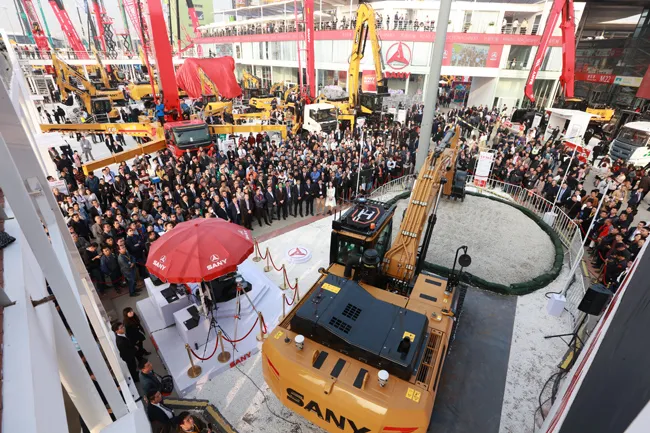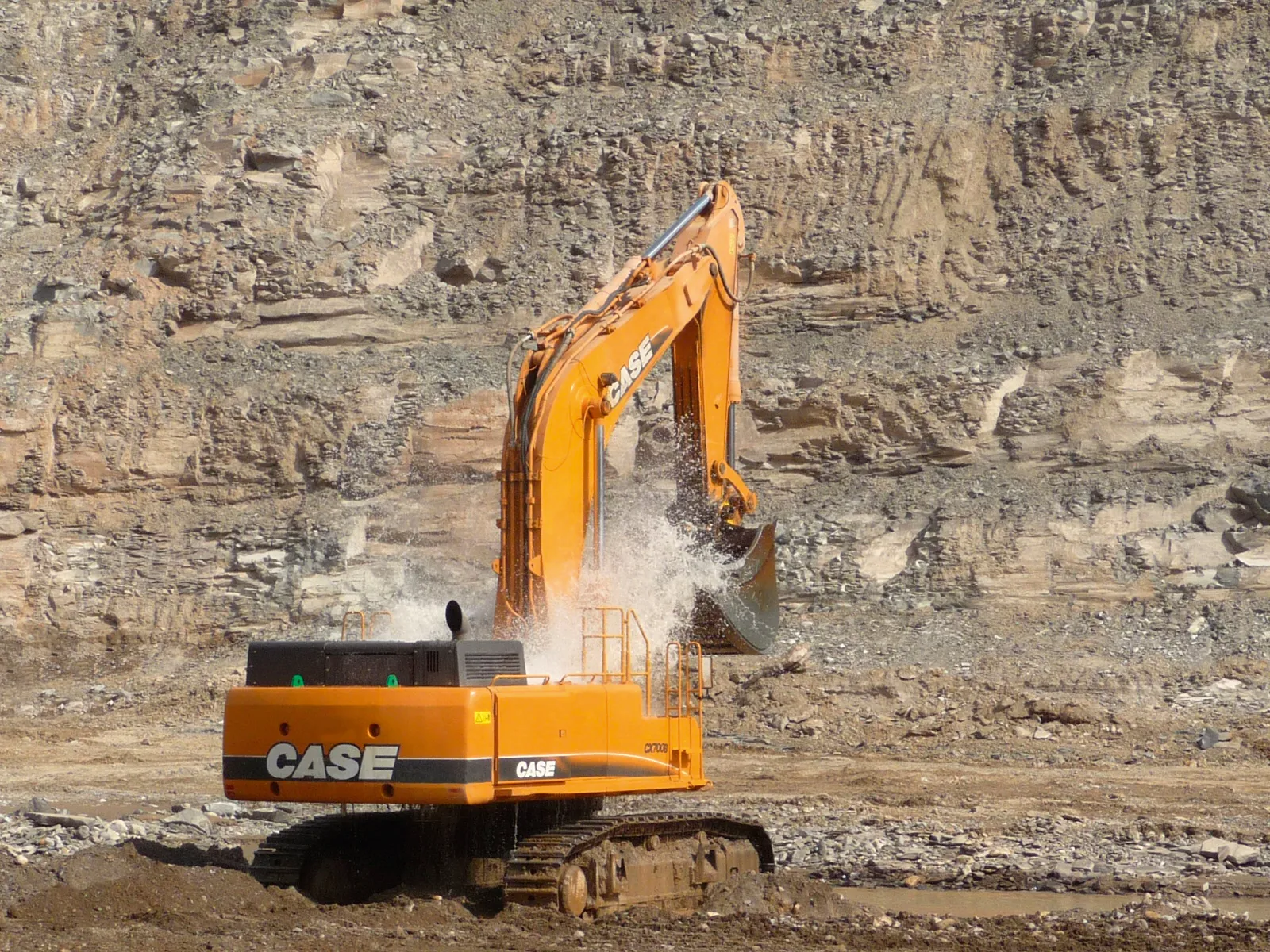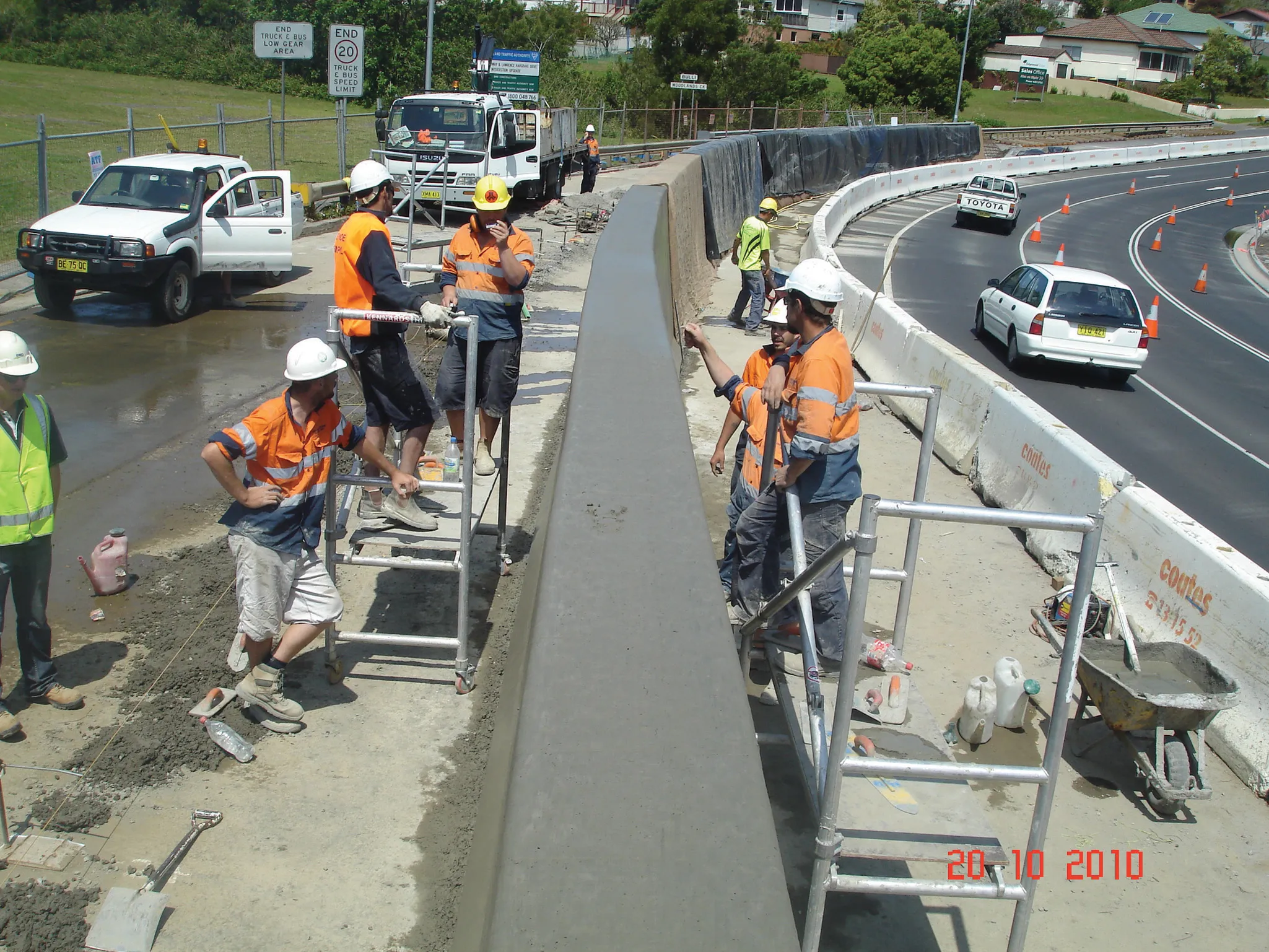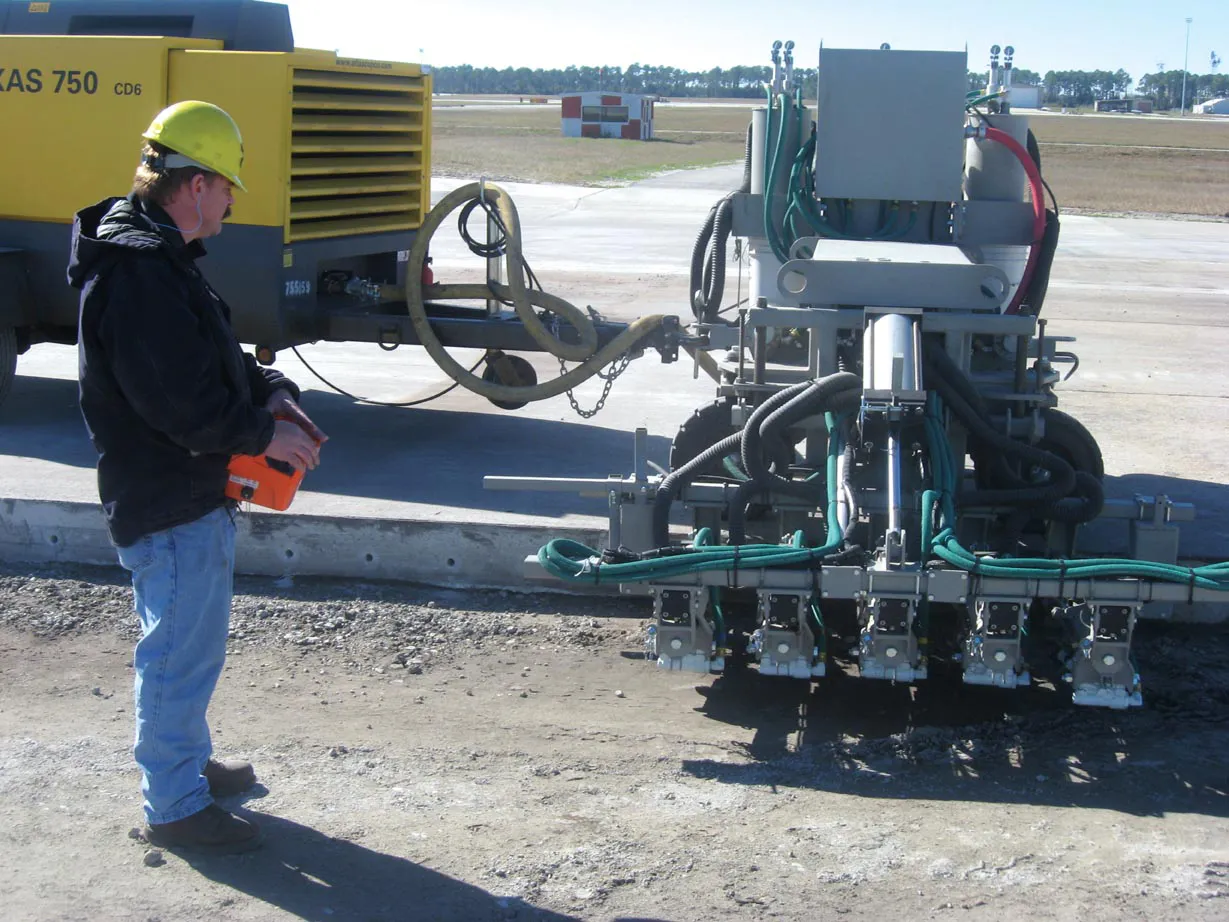
One of the most innovative new developments from Sany is the firm’s VR unmanned excavator control package. This allows the machine to be operated remotely so that it can be used in difficult or dangerous applications. These duties would include operations such as carrying out the New Austrian Tunnelling Method (NATM) in areas of unstable geology where there is a potential for roof collapses before support can be installed. They would also include working on difficult demolition jobs where there may be a risk from falling objects or from the presence of hazardous materials (whether toxic or radioactive) on-site. Equipment could even be operated at high altitudes or in atmospheric extremes of cold and heat, which would prove challenging for an operator getting to and from a piece of equipment and might require special air conditioning, heating or in-cab oxygen supplies.
The operator wears VR glasses, allowing control of the excavator even if it is working many hundreds of kilometres away. The system would also allow machines to be used by different operators working in shifts (and even in different time zones), permitting use around the clock for maximum productivity. According to the firm, the VR equipment is very realistic so that the experience is almost the same as sitting in the machine’s cab itself. The user has a full view of the working area and also hears any sounds on-site as well as audible warnings from the machine.
The firm is also offering a similar package for its crane range, which can now be operated safely from a large distance. According to Sany, there is no difference between operating the machine remotely and having someone in the cab. All the motions can be carried out in the same way, with the operator using the same controls as on the actual machine, as well as the company’s proven VR system.
Weighing in at 96.3tonnes in standard specification, the new SY950H excavator from Sany is one of the firm’s brand new models in this range. Power comes from a 503kW diesel that meets the latest Chinese emissions requirements, while the machine wields 6.1m3 bucket and can generate 495kN of bucket force. Sany has updated its earthmoving and extraction market machines, with an array of new excavator models and as well as additions to its haul truck range. New models have also been introduced to the concrete equipment range such as the new C8 pump truck, as well as the high performing HBT8018C-6 concrete pump.
The firm says it is keen to capitalise on digitalisation, and to utilise advanced technologies, such as with its VR system. “As a traditional enterprise, we must seize the intelligent opportunity and realize the transformation.” said Liang Wengen, chairman of Sany Heavy Industry. He continued that he intends to lead the Sany Group to complete the intelligent and digital transformation.
Meanwhile, Sany Heavy Industry also reports that its financial performance is strong, having achieved a business revenue of 28.1 billion yuan. This represents a year-on-year increase of 46.42%, while the net cash flow from operating activities was 6.221 billion yuan, a year-on-year increase of 5.55% and the highest level in the same period. The net profit was 3.389 billion yuan, a year-on-year increase of 192.09%, reaching 161% of the 2017 full-year level and far exceeding market expectations.









